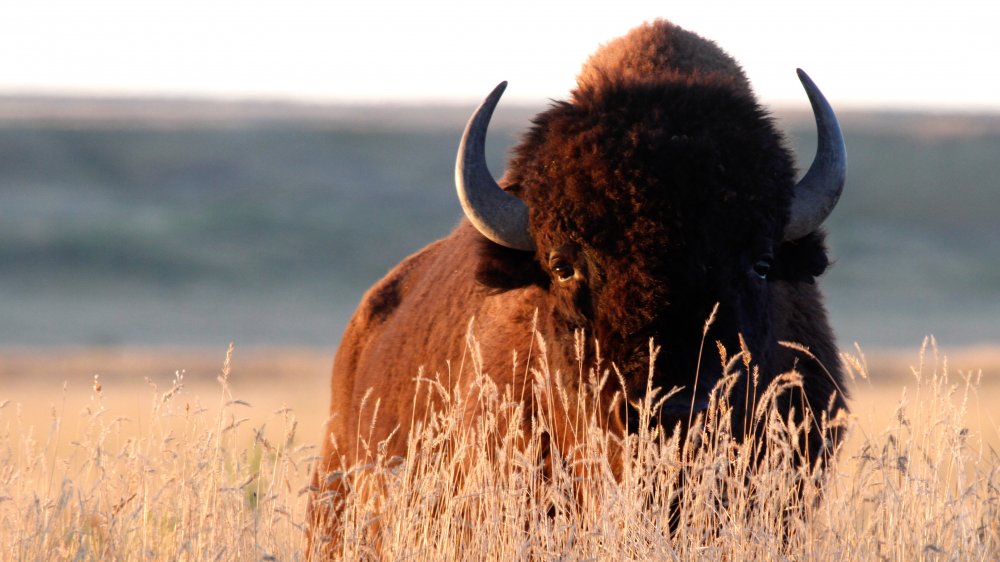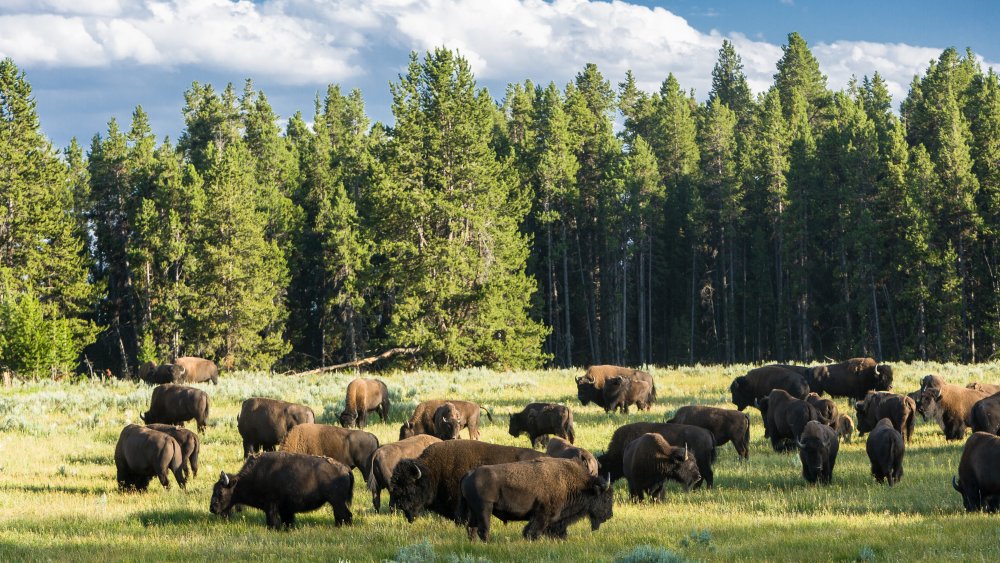The Truth About America's Oldest Herd Of Bison
Despite what "Home on the Range" claims, buffalo don't roam in North America — that would be bison; our national mammal. But much like the fate of Native Americans — bison have been relegated to a shadow of their former numbers, despite having much to offer the world. At one point, there were around 30 million bison roaming the American plains. But with the arrival of European settlers, they were slaughtered to near extinction in just a couple hundred years. By 1880, less than 1000 wild bison remained, according to Defenders.org.
Per the U.S. Department of the Interior, "Had it not been for a few private individuals working with tribes, states and the Interior Department, the bison would be extinct today."
Bison are a herd animal, and the oldest of these herds lives in Yellowstone National Park, where they have lived continuously since prehistoric times. Yellowstone's bison are extra special because they're "the pure descendants (free of cattle genes) of early bison that roamed our country's grasslands."
At the turn of the 20th century, only 23 remained in the park, according to Smithsonian, but now their numbers are closer to 5,000, making the Yellowstone bison the largest population on public lands (read: not for human consumption.)
Have you herd?
As you may know, bison are really good eatin', which is part of the reason they were hunted to near-extinction. Ted Turner, the founder of CNN, also owns Ted's Montana Grill, which serves sustainably-sourced bison burgers. He owns roughly 51,000 bison across fifteen ranches, making him the largest private bison owner in the world!
Aside from being one of the healthier and tastier meats you can consume, bison are just beautiful, fascinating creatures worth preserving. They're peaceful (another reason they were hunted so mercilessly, like the dodo), yet powerful — capable of running up to 35 miles per hour, jumping tall fences and swimming like a hairier version of Olympian Michael Phelps.
Their feeding habits play a vital role in prairie plant diversity, and when their time comes, the food chain benefits greatly from their hulking, nutritious bodies. Best of all, they played an important role in shaping the modern conservation movement.
The DOI notes that in 1883, "Teddy Roosevelt traveled to the Dakota Territory to hunt bison." He eventually returned to New York with a new outlook on the importance of our environment, leading him to form the United States Forest Service and the American Bison Society, among other important conservationist measures.

